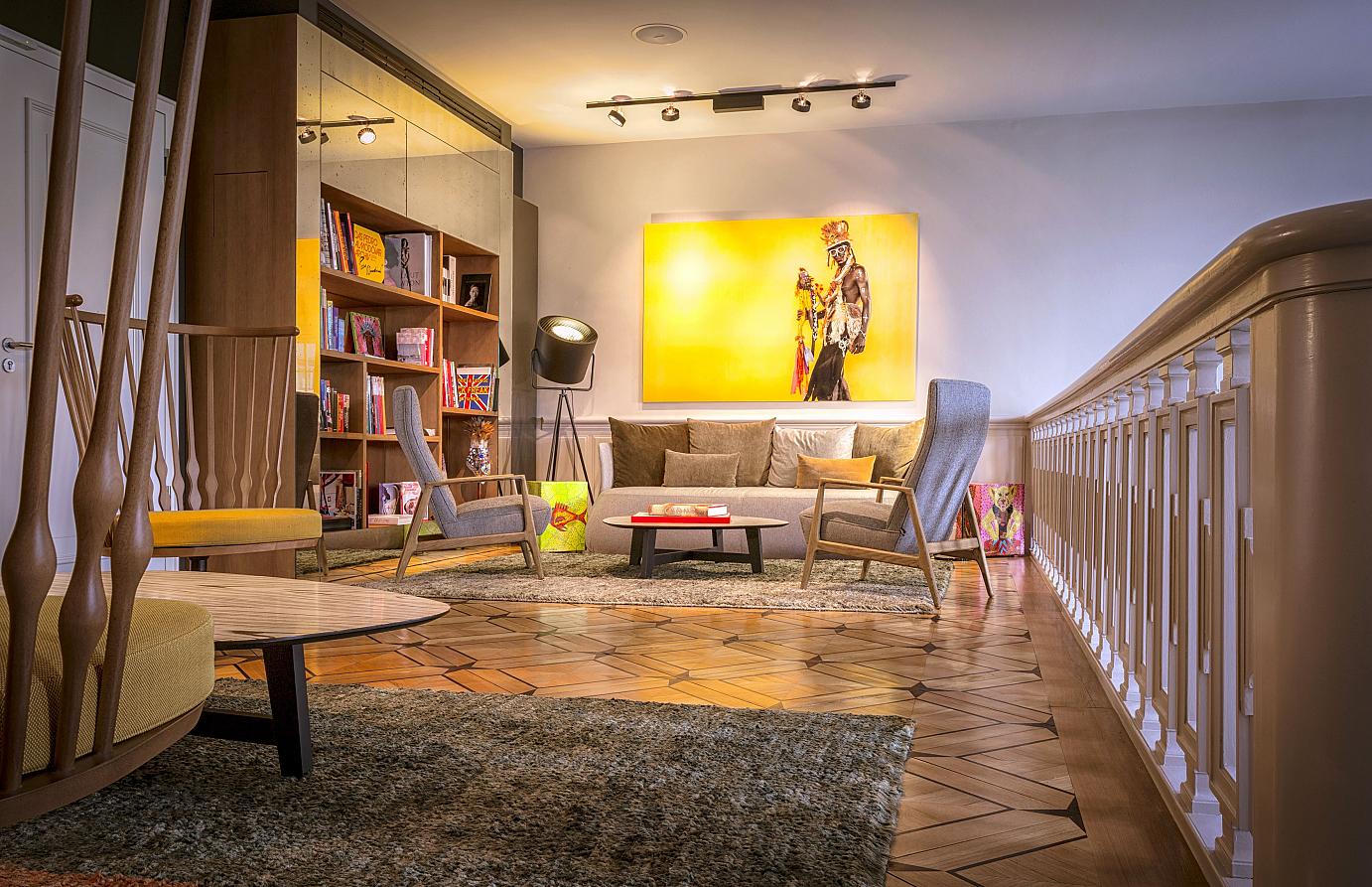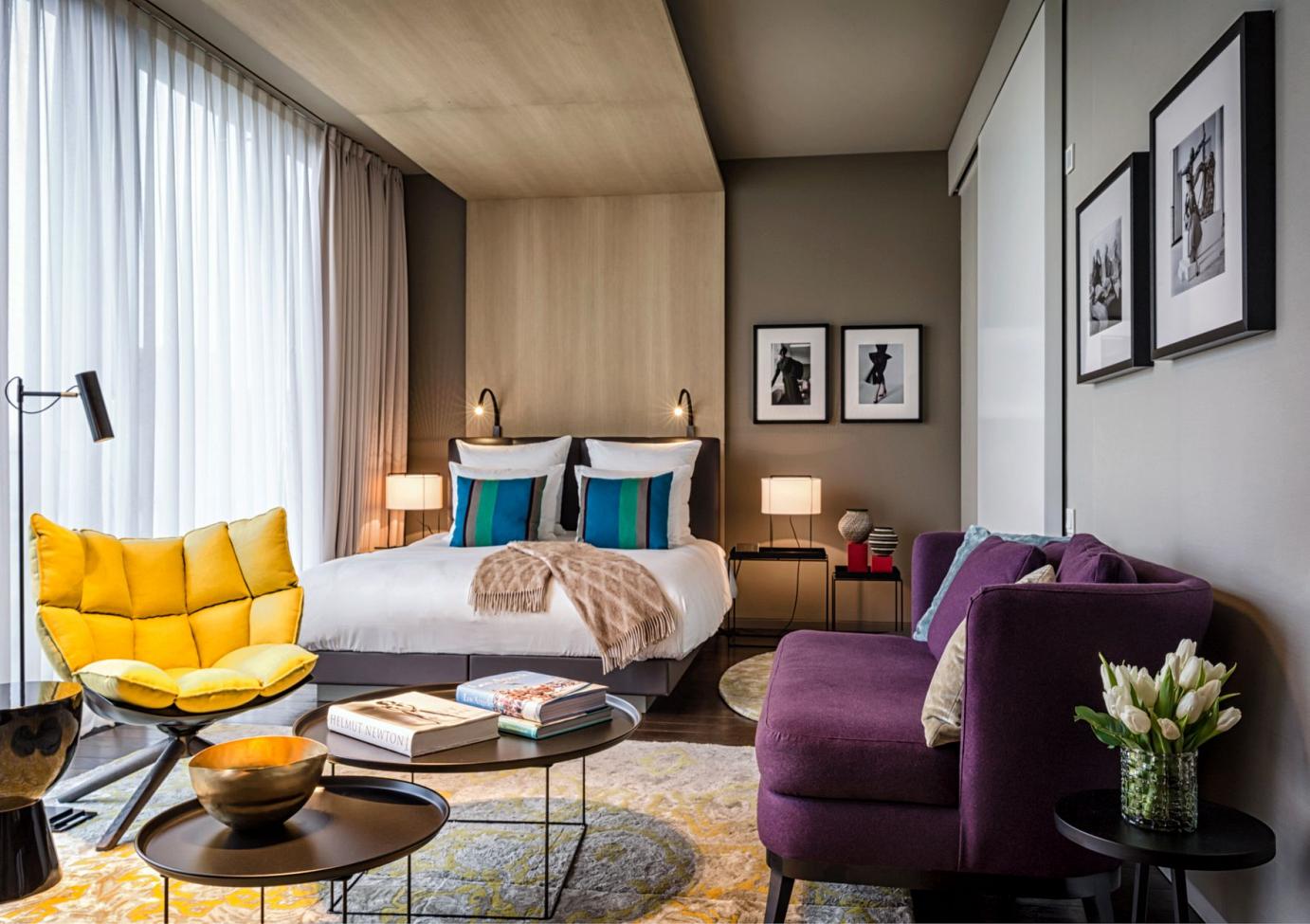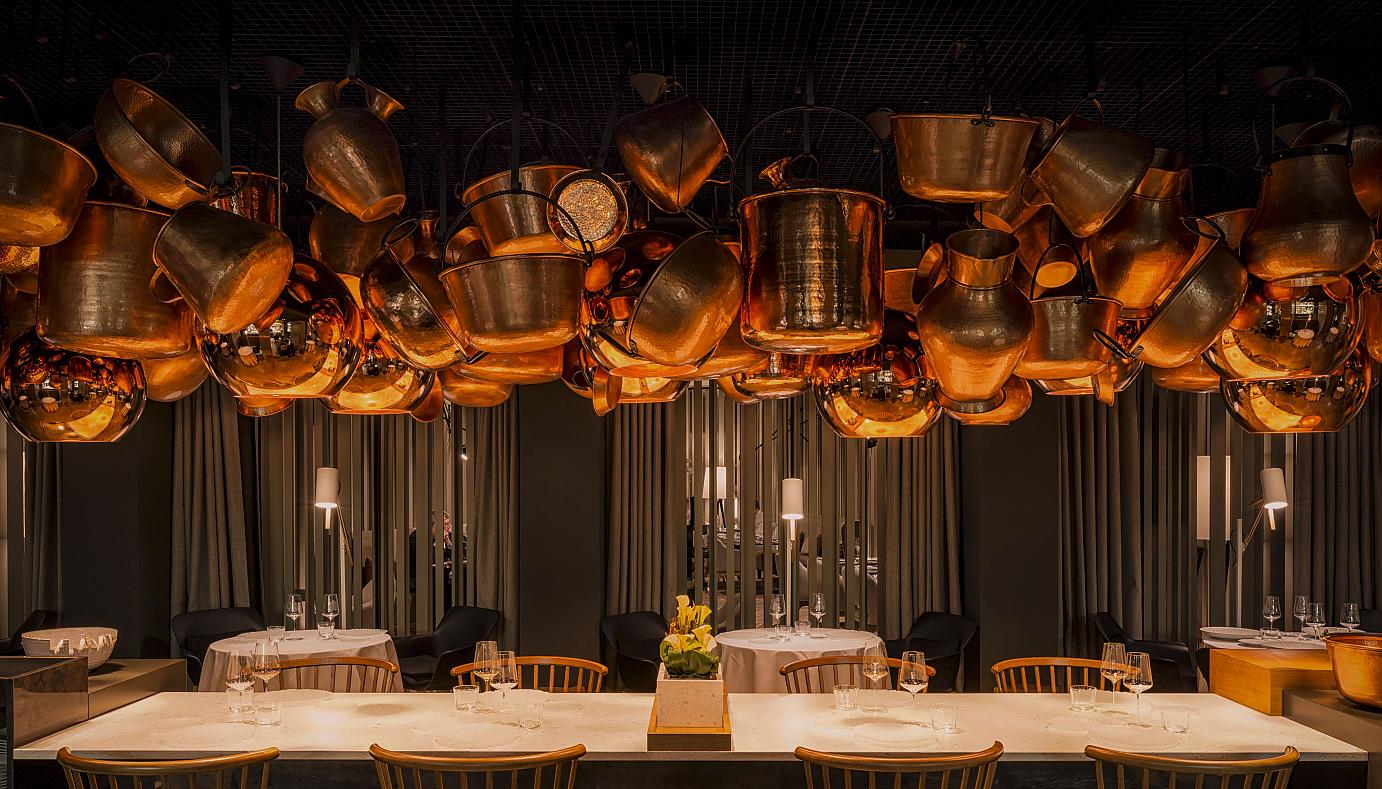Tales of a building: Das Stue in Berlin
Upon setting foot into the hotel’s lobby area, guests are greeted by a gigantic crocodiles’ head sculpted by Parisian artist Quentin Garel. Walls around the premises hold fine examples of black-and-white vintage fashion photography collected by one of the hotel’s owners. Artwork and objects placed throughout public spaces vividly pay tribute to a prominent neighbour, the fabled Berlin zoo only a hop away: an enormous giraffe and two gorillas made of painted chicken wire are complemented by fellow animals ready to serve as poufs or practical footrests.
Who might have anticipated in the late 1930s, that the sophisticated edifice erected to house the Danish diplomatic mission in Berlin, would see it being converted into a stylish luxury hotel more than 70 years later? To transform a repeatedly abandoned building into the fashionable spot Das Stue was destined to be, it had to go through extensive refurbishment. It received a novel wing now attached to its former back courtyard and a completely new contemporary identity enhanced by a blend of old and new elements.
When Das Stue opened its gates in December of 2012, it already looked back on a changeful past.

When entering the lobby, hotel guests are welcomed by a wide croc’s smile.

Comfy and relaxed: the Library in the historical front part of the building. Each storey profits from an expansive landing spreading between staircase and guest room corridors. Bearing witness to the structure’s grand history are authentic parquet floors and French doors enhanced by original decorative elements restored back to their former beauty. The three-storey library holds a wealth of books on art, architecture and culture and randomly positioned animal figures. Embellishing handicraft, photographs and Cajóns from Panama lend the third floor a colourful and cozy atmosphere.
Are you „ain Berliner“?
A zoo usually is easily recognised as a zoo almost anywhere on the globe. In Germany, the native expression for „zoo“ is „Tiergarten“ (garden for animals), a circumstance pre-programmed to cause confusion especially in Berlin. There, the „Tiergarten“ is a large recreational public park situated in the neighbourhood of the actual zoo – just without the benefit of rare fauna (although there’s no lack of other exotic creatures).
Guests staying on privileged floors of Das Stue (Danish for „living room“) have both options right at their threshold and are spoilt for choice: watching ostriches gallop, antelopes skip or Przewalski horses graze gracefully on the one and denizens jog, bike, laze, BBQ or celebrate on the other side.

Residing in style in the Penthouse Suite.
A war project: The Royal Danish Embassy in Berlin
Johann Emil Schaudt, architect of Berlin’s renowned KaDeWe department store, was commissioned to design and build a Royal Danish embassy worthy of its status, a process lasting from 1938 to 1940. The building’s strong character is the statement of an optimistic zeitgeist prevailing despite an ongoing war.
A dramatic history
When WWII was finally over and the world taking a deep breath of relief, not much was left of the formerly thriving German capital except hollow facades gruesomely protruding from mountains of debris amassed in a sea of devastation and desolation. Few buildings had survived, one of which was the badly battered Danish Embassy. Owing to Germany’s separation, Bonn had become the new capital, hosting embassies of most nations. Yet, the Danish Government reclaimed their old Berlin property, had it renovated and put to a different use. Eventually, the impressive building was sold to a public utility housing company who allowed the stately structure to sink into oblivion until acquired by the city of Berlin. For a while, it served as the German Telecom’s venue for executives’ training, but was later abandoned once more to stand empty for another number of years.
Germany’s reunification in 1990 set off a new era. Embassies moved back to Berlin, and so did the German government at the end of the decade. Denmark – together with Finland, Iceland, Norway and Sweden – took quarters within the extravagant architecture of their new common Nordic Embassies in 1999.

Today’s ambassador is an exquisite cuisine: Das Stue’s fine dining restaurant Cinco by Paco Perez holds a precious Michelin star.
Facts & figures
Das Stue’s 78 guest rooms and suites are coming in seven categories, ranging in size
from 27 to 110 sq.m, each done up in a different look. All feature burnt oak parquet floors, rain showers (or oversized bathtubs) and a full HD entertainment system with Internet access and a flatscreen TV.
Panoramic views through floor-to-ceiling windows are to be had from many rooms housed in the new wing (13 of which have private balconies or terraces). WiFi in rooms and public spaces is free of charge.
Spaces designated for meetings & events
The Bel Etage Salon (65 sq.m) next to the historical staircase and library is extended by a 50 sq.m terrace overlooking the Tiergarten. Another 45 sq.m – the Fine Dining Salon – can be privatised for functions.
In total, connectable spaces at Stue’s Bel Etage add up to 380 sq.m
All images are at the courtesy of ©Das Stue
